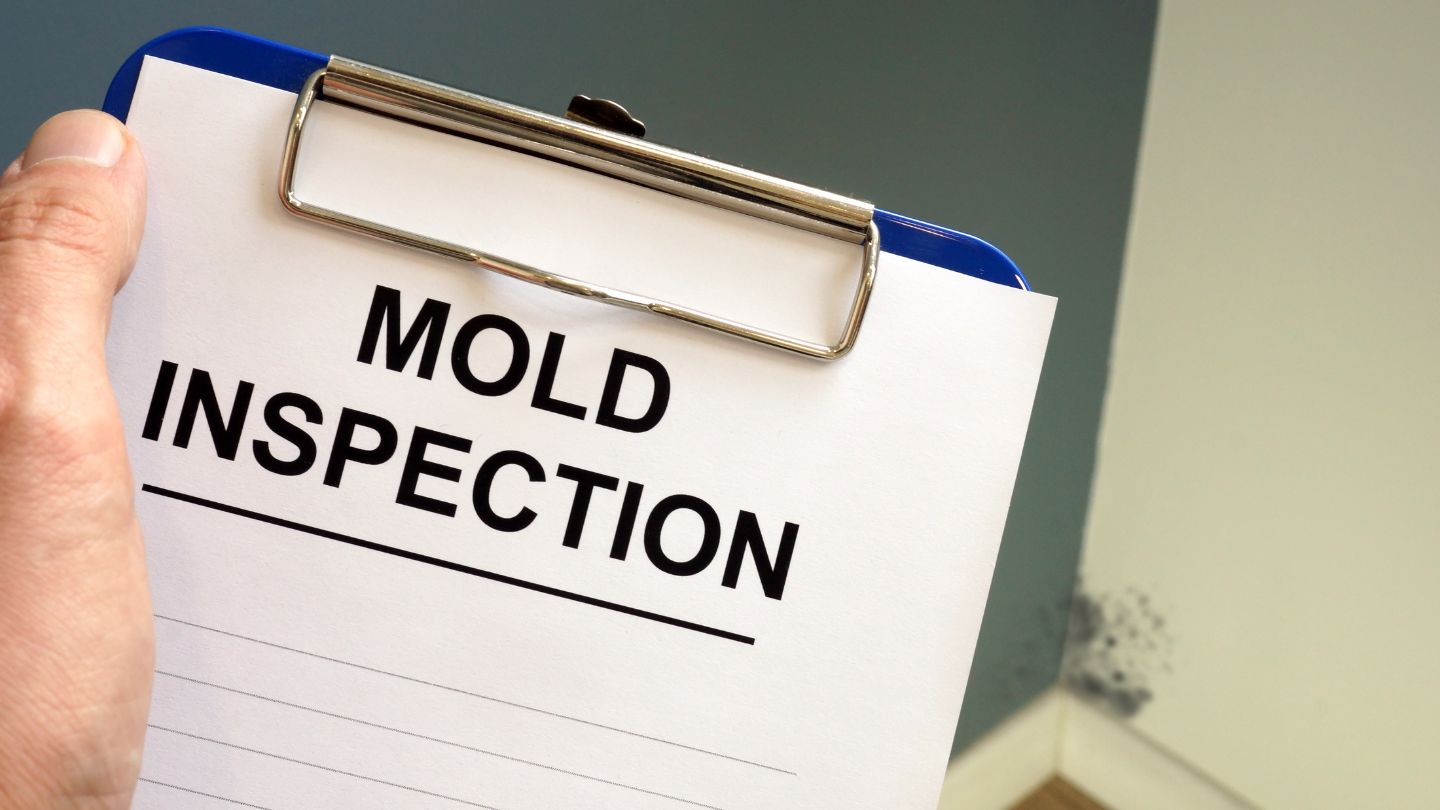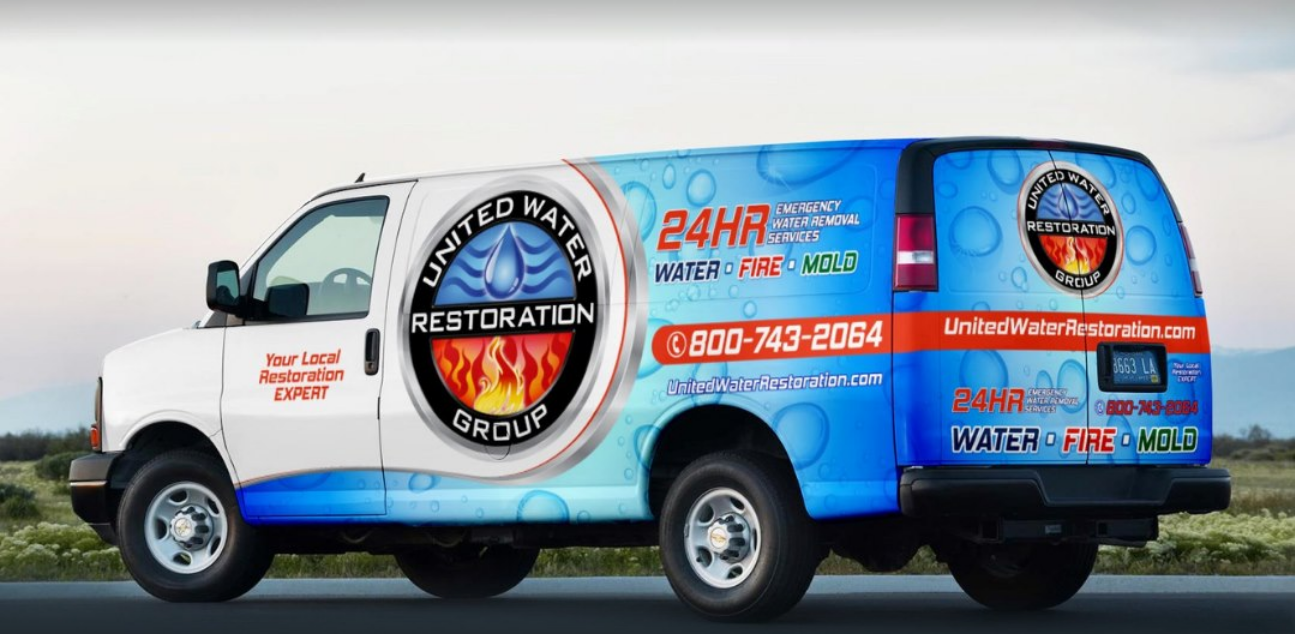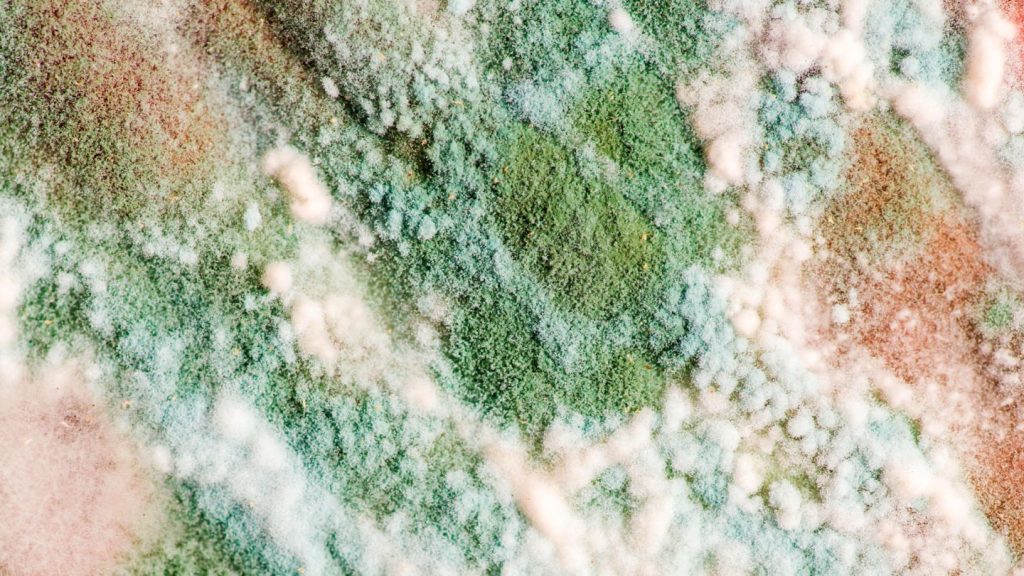Every mold variant presents its challenges, and white mold is no exception. Its presence can lead to health issues among building occupants and, if disregarded, may result in structural damage. Due to its inconspicuous nature, white mold often goes unnoticed, gradually impacting the well-being of those residing in affected homes.
In this blog post, we’ll discuss white mold’s common causes, recognizable signs, and essential steps for prevention and removal, and we’ll provide valuable insights to help homeowners address this common issue in their homes.
What is White Mold?
Although often considered less harmful than black mold, white mold can still pose health risks and structural damage if not adequately addressed. Before attempting remediation, it is essential to identify white mold and understand its growth patterns and potential hazards.
White mold is a fungus that thrives in damp, humid environments. It can appear as a fuzzy or powdery substance on walls, ceilings, and household items, and it is often mistaken for efflorescence. Distinguishing between white mold and efflorescence can be crucial for practical remediation efforts in your home. Here’s how you can tell the difference:
Appearance:
- White Mold: White mold often appears fuzzy or powdery and may spread irregularly across surfaces. It can develop on various materials, including walls, ceilings, fabrics, and organic matter.
- Efflorescence: Efflorescence typically presents as a crystalline, powdery deposit on surfaces such as concrete, brick, or stone. It forms when water-soluble salts migrate to the surface and crystallize as the water evaporates.
Location:
- White Mold: Mold growth is commonly found in damp, humid environments with poor ventilation, such as bathrooms, basements, and attics. It may also develop in areas affected by water leaks or flooding.
- Efflorescence: Efflorescence occurs on mineral-based materials, primarily on concrete, brick, and stone surfaces. It often appears in areas with water or moisture, such as basement walls or concrete floors.
Texture and Persistence:
- White Mold: Mold typically has a fuzzy or velvety texture and can penetrate porous materials. It may reappear even after cleaning if the underlying moisture issue is not addressed.
- Efflorescence: Efflorescence is powdery and easily brushed or wiped away. It tends to reoccur if moisture continues to transport salts to the surface.
Smell:
- White Mold: Mold growth often produces a musty or earthy odor, especially in areas with significant infestation or poor ventilation.
- Efflorescence: Efflorescence typically does not emit any distinct odor unless accompanied by other issues such as mold or moisture-related problems.
Testing:
- If uncertain, you can perform a simple test to distinguish between white mold and efflorescence. Apply a few drops of water to the affected area:
- If the substance dissolves or disappears upon contact with water, it is likely efflorescence.
- If the substance remains unchanged or spreads further, it is likely mold.
By carefully observing the characteristics and location of the white substance and considering environmental factors, you can determine whether it is white mold or efflorescence and take appropriate steps to address the issue effectively.
If you’re unsure about the presence of white mold or efflorescence, consider consulting our Mold Remediation Professionals for a thorough assessment that can provide accurate identification and recommendations for appropriate action.

How Harmful is White Mold?
White mold is generally considered non-toxic but can trigger allergy-like symptoms. While some individuals may not experience any effects, others may be sensitive or allergic to the mold spores.
While not all molds produce toxins, some strains of white mold can release mycotoxins into the environment. These toxins can have harmful effects on human health, including neurological symptoms, fatigue, headaches, and even organ damage in severe cases. Prolonged exposure to mycotoxins can have serious long-term consequences.
White mold releases spores into the air, which home occupants can inhale. These spores can irritate the respiratory system, leading to coughing, wheezing, and difficulty breathing. Individuals with asthma, allergies, or other respiratory conditions may be particularly susceptible to these effects. For many people, exposure to white mold can trigger allergic reactions.
What are Some of the Common Symptoms of White Mold Exposure?
Understanding the symptoms of white mold exposure is crucial for recognizing potential health issues and taking appropriate action. In this article, we’ll explore common symptoms associated with exposure to white mold and discuss the importance of addressing mold infestations promptly to protect your health and well-being. Individuals with weakened immune systems, such as older adults, young children, and those with certain medical conditions, are at a higher risk of developing severe health complications from exposure to white mold. Mold exposure can exacerbate health problems and make it harder for the body to fight infections.
Common Symptoms of White Mold Exposure
Respiratory Issues
Exposure to white mold can irritate the respiratory system, leading to symptoms such as coughing, wheezing, and shortness of breath. Individuals with pre-existing respiratory conditions, such as asthma or chronic bronchitis, may experience worsening of their symptoms when exposed to mold spores.
Allergic Reactions
Allergic reactions are common among individuals exposed to mold, including white mold. Symptoms may include sneezing, runny or stuffy nose, itchy or watery eyes, and throat irritation. Those with allergies to mold may experience more severe symptoms compared to others.
Skin Irritation
Contact with white mold or its spores can cause skin irritation in some individuals. Symptoms may include redness, itching, and rash development. Those with sensitive skin or underlying skin conditions may be more prone to experiencing skin irritation from mold exposure.
Headaches and Fatigue
Prolonged exposure to mold spores can disrupt sleep patterns and lead to chronic fatigue. Headaches associated with mold exposure may vary in intensity and duration.
Cognitive Symptoms
In some cases, mold exposure can affect cognitive function and concentration. Individuals may experience difficulty focusing, memory problems, and impaired decision-making abilities. These cognitive symptoms can impact daily functioning and overall quality of life.
Sinus Infections
Mold exposure can worsen existing sinus issues and increase the risk of sinus infections. Symptoms may include facial pain, nasal congestion, and post-nasal drip. Chronic sinus infections may require medical treatment.
Asthma Exacerbation
Mold exposure can trigger asthma attacks or worsen asthma symptoms in individuals with this condition. Wheezing, chest tightness, and difficulty breathing may occur, requiring prompt medical attention to manage asthma symptoms effectively.
Recognizing the symptoms of white mold exposure is crucial for protecting your health and well-being. Suppose you experience any of the symptoms mentioned above, especially with visible signs of mold in your home, it’s essential to act promptly. This may involve consulting with a healthcare professional to address any health concerns and arranging for professional mold remediation to remove the source of mold infestation from your home. By addressing mold exposure proactively, you can mitigate health risks and create a safer, healthier living environment for yourself and your family.
Can I Live in My Home if White Mold is Present?
Living in a home with mold can significantly impact the quality of life for occupants. Mold growth may cause unpleasant odors, property damage, and aesthetic concerns. It can also create constant worry and stress for homeowners, affecting their peace of mind and well-being.
While cleaning and remediation efforts may temporarily mitigate the effects of white mold, it’s essential to address the root cause of the problem—excess moisture. Without addressing underlying moisture issues, mold will likely return, posing an ongoing risk to occupants’ health and safety.
Is it Safe to Clean White Mold Myself?
Although we don’t recommend DIY mold remediation, you can clean white mold yourself if you’re dealing with a small affected area and the mold growth is not extensive. However, taking proper precautions and using appropriate cleaning techniques is essential to ensure effective removal and minimize health risks.
Before starting the cleaning process, ensuring that the area has proper ventilation is vital to avoid exposure to mold spores. You should wear protective gear such as gloves, a mask, and safety goggles to prevent contact with mold and potential health hazards. Isolating the affected area using plastic sheeting and tape is essential to stop mold spores from spreading to other parts of the house.
- Mix a water and detergent solution or a commercial mold cleaner according to the manufacturer’s instructions. Be cautious when using bleach, as it can produce harmful fumes and should not be mixed with other cleaning agents.
- Use a stiff-bristled brush or sponge to scrub the affected surfaces thoroughly. Pay close attention to areas with visible mold growth and any porous materials, such as wood or drywall, where mold may have penetrated, as these might need replacing.
- Use a clean cloth or sponge dampened with water to wipe down surfaces and remove residue.
- Allow the cleaned surfaces to air dry completely. Use fans or dehumidifiers to speed up drying and prevent moisture buildup.
- If any materials or belongings are heavily contaminated with mold and cannot be cleaned effectively, consider discarding them in sealed plastic bags to prevent further contamination.
- Identify and address the moisture source causing mold growth and prevent future mold growth by maintaining proper ventilation, controlling humidity levels, and promptly addressing water leaks.
- Monitor the cleaned area and look for any signs of mold recurrence. If mold returns or if you experience persistent mold-related health problems, consider seeking professional assistance for thorough remediation.

Should I Hire a Professional in Mold Assessment and Remediation?
While DIY solutions may seem appealing, removing white mold requires specialized knowledge, equipment, and safety precautions to ensure effective and safe remediation. Keep reading to discover why relying on a mold remediation specialist is crucial when dealing with any mold, exploring the risks of DIY approaches, and the benefits of professional expertise.
Mold removal involves exposure to mold spores, which can exacerbate respiratory issues and cause allergic reactions. Mold remediation specialists have the expertise to assess the type and extent of mold infestation accurately. They can identify hidden mold growth, determine the underlying causes of moisture issues, and develop a customized remediation plan tailored to your home’s needs.
Specialized Equipment and Techniques:
Professional mold remediation companies are highly trained to remove mold effectively from your home. They use various safety measures, techniques, and equipment, such as protective gear, HEPA filtration systems, negative air machines, and specialized cleaning solutions, to eliminate mold spores and prevent future growth without compromising your living environment. In most cases, you can live in your home while remediation occurs.
Thorough and Complete Removal:
DIY mold removal methods may only address surface mold, leaving behind hidden mold spores that can continue to grow and spread. Mold remediation specialists employ thorough removal techniques to ensure all traces of mold are eradicated from your home, reducing the risk of recurrence.
Preventing Cross-Contamination:
Improper handling of materials contaminated with mold can cause mold spores to spread to unaffected areas within your home. Mold remediation specialists adhere to removal standards, containing and isolating affected areas and preventing the spread of mold during removal.
Compliance with Industry Standards and Regulations:
Mold remediation is subject to industry standards and regulations established by organizations such as the Environmental Protection Agency (EPA) and the Institute of Inspection, Cleaning, and Restoration Certification (IICRC). Hiring a certified mold remediation specialist ensures compliance with safety standards and effective remediation.
While DIY approaches may seem cost-effective initially, the risks and limitations of attempting to remove white mold yourself far outweigh the benefits. Calling a mold remediation specialist ensures thorough, safe, and effective removal of white mold from your home, protecting your health, property, and peace of mind. Don’t take chances with mold remediation – trust the expertise of United Water Restoration Group to get the job done right the first time.
In conclusion, white mold in your home should not be taken lightly. While it may appear less sinister than its black counterpart, white mold can pose significant health risks and contribute to structural damage if left untreated. By familiarizing yourself with the common signs and symptoms of white mold and taking prompt action at the first indication of a problem, you can safeguard your health and preserve the integrity of your home.
Remember, prevention is vital to avoiding mold growth in the first place. Keep your home well-ventilated, address any moisture issues promptly, and conduct regular inspections to catch mold growth early on.

White Mold in Your House? Contact the Mold Remediation Experts Today
If you encounter white mold in your home, don’t hesitate to call United Water Restoration Group 24/7-365. Our mold remediation specialists have the expertise, equipment, and safety protocols to effectively identify and remove all types of mold and restore your home to a safe and healthy condition.
By staying informed and proactive, you can effectively combat white mold and create a healthier living environment for you and your family. Don’t let white mold take hold in your home – take action today to protect your health and well-being.





